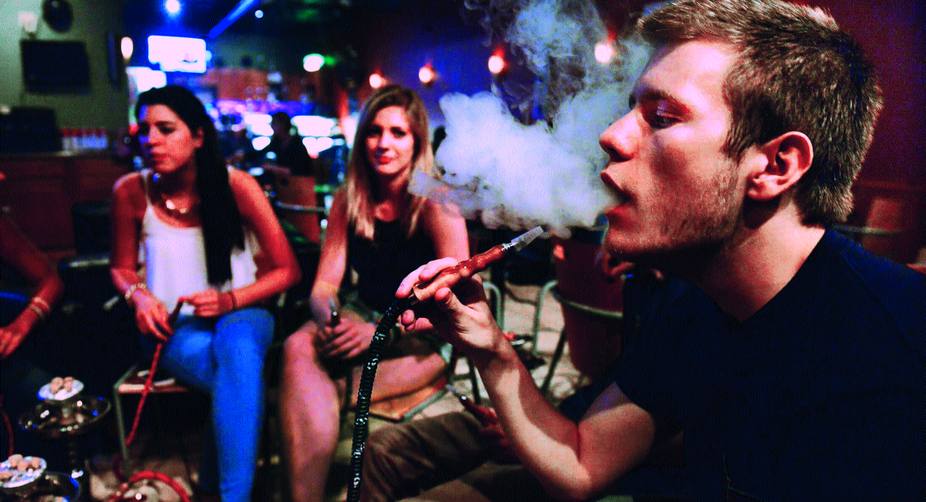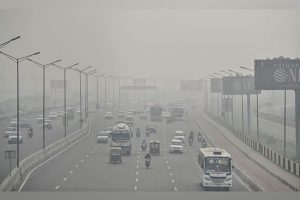Over a year ago, a major newspaper in India conducted an
opinion poll among the youth on the nightlife in India. The poll revealed many
things, but what emerged prominently was that around 90 per cent youth in urban
India think that nightlife is a crucial part of their life and they would
prefer to live or make that city their home, where there is a
“happening” nightlife. The opinion survey highlighted the growing
craze and love for nightlife among Indian youth. It is as much a part and
parcel of life as their job, office, friends, and relatives.
Now, the big question is: What is nightlife? If one searches
the word on Google, it reads, “the social activities and entertainment
available in town at night”. But for our youth, nightlife means something
else. For them, it is synonymous with partying, drinking, dancing and having
fun with their friends through the night. For the older generation this at times
is a cultural shock as traditionally, one is advised to go to bed as soon as it
gets dark. In fact, going out at night is still considered not too good and is
always looked at with a skeptical eye. Even government has issued strict
guidelines that ensure restaurants, pubs, clubs and bars shut down, latest by
midnight. However, they cite a different reason – security. Officials and
police personnel opine that keeping late night increases the chances of crime
in the city.
Advertisement
In reality, pub and club owners say, government regulations
and moral policing by right wing activists hardly made any difference; the
sector is growing in leaps and bounds. Opening up of new lounges and club every
other day is the testament to this.
Fat data
If one takes a look at the facts and figures, one would
notice that this sector is generating a lot of revenue to the government as
well as employment. In a conversation with several players, it emerged that the
industry’s potential is still untapped. On the other hand, the food and nightlife
industry is being ignored by the government. In 2015-16, organised food service
market size was Rs.22,000-22,500 crore. It has almost doubled from Rs.11,500-11,900 crore in 2013. If a mere 30 per cent of the fragmented and unorganised industry came
together, it could generate an additional 13,000-14,000 crore.
As for employment, the sector has a potential to generate
5.8 million jobs – an estimated 3 million in the organised and another 2.3
million in standalone outlets. If the market continues to grow at the current
pace of 20 per cent per annum, the sector would have employed 8.7 million
people by 2021.
Evolving fast
As already discussed, the concept of nightlife travelled
into India from the West. But the down the years, the nightlife fever is
gripping the Indian society very rapidly. Just a decade ago there were just a
handful of night clubs and bars and that too in Five-star hotels.
Then the city had
discothèques and private loft parties, employing DJs (disc jockeys). These
venues were mostly accessible to members only but now there is open access to
night clubs, resto bars and lounges and can be enjoyed by everyone. “Just
a few years back, a customer had limited choice. But over the years, things
have improved. Now people can choose from a list of restaurants, movie
theatres, play bars and others,” said A D Singh, owner of Olive Bar and
Kitchen.
In recent years, the
country is home to bars, night clubs and music festivals. “It’s a growing
trend for the younger generation to work late in the day. For them a city’s
nightlife would be considered a crucial factor in deciding where they would
like to work and live,” said Sanjay Vazirani CMD and MD of Foodlink
Services India Pvt. Ltd.
It is not that
nightlife is growing only in metro cities. Even small cities are in the race.
They also sport bars, earning a good revenue. The only problem with this market
is that it is untapped and needs to be regulated. However, in terms of
infrastructure, bars in small cities cannot compete with the metropolitan
cities, but they are still doing well. “I can tell you that people are
spending more money in Kanpur, Nagpur and Chandigarh for a good nightlife. They
are ready to pay, they only need good services. Moreover, Delhi’s numerous
malls and bars are full of people from Chandigarh and other neighboring
city,” said Dilip Joshi, an industry expert and consultant for
restaurants, bars, lounges.
Early or late?
Apart from Goa, nightclubs in India normally start early and
finish no later than 1:30 am. While cities like Mumbai and Delhi have specific
venues for after parties, which go until 3-4 am, often people choose to host
house parties, which go on as per their wishes.
A conversation with
corporate workers, students and other professionals revealed that nightlife in
India is like a curfew, as it starts early and ends early too. In fact, many
countries, which are less-developed than India, including many Muslim
countries, which are more conservative than India, have a better nightlife.
Their bars, pubs and clubs are open for longer in the night than in India.
“I am in favour of opening the bars and pubs till 6 am. This change would
do well for our business, which in return would boost the country’s
image,” said Sanjay Vazirani.
Riyaaz Amlani,
president of National Restaurant Association, also advocated opening bars and
pubs round the clock but for different reason. He thinks if these bars and
restaurants are opened the whole day or late at night, it can boost tourism
also. “If you see, the most popular
tourist destinations in the world have vibrant nightlife. For instance,
take Hong Kong, Singapore or Dubai,” Amlani added. “I have noticed
that tourists visit monuments during the day but at night want a good
nightlife, where they can spend some quality time.”
However, officials
have a different perspective. They reason that opening of bars late at night
could lead to drunken brawls at the pubs. Incidents of drunken brawls in many
night joints substantiate these claims. In fact, a top cop in Delhi said in a
report in news website, Firstpost, “Incidents of crime against women,
drunken driving and brawls won’t stop and there will be a spurt in such crimes
if clubs, bars, restaurants and pubs are allowed to operate 24 hours. Many of
these establishments indulge in illegal activities like flesh trade, serving
liquor to those below 25 years and so on. Shutting the clubs down by 1 am helps
the police in ensuring women’s safety and maintaining law and order.”
Police also fears a
rise in pub brawls and drunken driving if the premises are open all night.
There are many small bars and restaurants, which don’t have enough security and
are unable to control brawls and molestation. At the same time, there are many
places, which promote sex racketing or escort system. Many party goers agree
that they go looking for a random “hook-up”. If they fail, it turns
into a brawl or are accused of molestation.
Longer and safer
There is a huge debate over the timings of these bars and
pubs. Many regulars agree that these places should be open till late night, but
many disagree too. Their argument is that in a city like Delhi opening till
late night was an invitation for crimes. Given the incidents of crime, which
mostly happen at night, they are justified.
However, party lovers and industry players in cities like
Delhi, Bangalore, Kolkata and Mumbai, have a different take on it. They think
that a city with an active nightlife actually becomes more safe for women
because of the presence of large numbers of people in public places even late
at night. If there are more people on road, the chances of crime is very less,
they assert. “It is proven that if a city has a vibrant nightlife, it is
more safe. Darkness puts less traffic on the road. When there is enough traffic
and people on the road, the crime will drastically reduce,” said Amlani.
“Do you think,
if we close the bars and disco at sharp 11 o’clock, the children will go back
to their homes. No…I don’t think so. They will go some other place like
inside cars or other open areas to party and needless to say, these places are
more unsafe. If one stays in bars or pubs, they will be under the watch of the
bar’s CCTV camera, bouncers and surrounded by people. Isn’t it better to open
the bar till late night?” expressed Dilip Joshi.
To check brawls, the
clubs and government should increase the deployment of bouncers not only within
the premises but also in their vicinity. “If there are more bouncers and
better street lighting around an outlet or in the market where it is situated as
well as parking lots, it will help a great deal,” said Joshi.
Untapped market
Many places have the most vibrant nightlife. For example
Hong Kong sees 45 million people and London 25 million people. But all of India
sees only 8 million people. Even though the industry is flourishing these days,
it is said to be facing multiple problems from all sides. The major problem
with this industry is not having a central coordination. “Tell me, whom
should I connect for this industry. Who is listening our problem?” asked
Dilip Joshi. “In a place like London or Berlin, they have nightlife
commissioner and czars. Similarly, we can also have Bombay nightlife
commissioner or Delhi nightlife commissioner, who will work like a mediator
between government and pubs. He will be responsible for everything.”
Apart from this the
industry is also facing problem of multiple taxation and over-regulation.
Different departments have different taxes. If we go as per the demand of the
industry, they should club all the taxes, so that we don’t have to walk from
one office to other just to fulfill the criteria,” said A D Singh.
Creating problems
News of bar brawl is quite frequent. Sometimes wards of big
names, including politicians, are also involved. Remember the story of Jessica
Lal murder case, the fight of Lalu
Yadav’s sons or brawl of Delhi Police Commissioner’s son and a Haryana
politician’s son? These news are quite frequent. Apart from this, there is news
about low and medium budget bars also promoting drugs and prostitution.
Usually, for the sake of safety, and to deal with any untoward incidents or to
ward off any brawl, almost every club has employed bouncers, but not many. On
many occasions, these bouncers are quite helpful in stopping fights. However,
the situation gets tense when the women start a brawl. This is a very common
sight. At that time, the situation turns very sensitive because none of them
hire any women security guard or bouncers.
By Rakesh Kumar











